
Posts Tagged: Gordon Frankie
Find the Praying Mantis in the African Blue Basil
Honey bees absolutely love African blue basil. If there ever were a "bee magnet," this plant is it. We first learned of African blue basil, (Ocimum kilimandscharicum × basilicum 'Dark Opal'), through Gordon Frankie, UC Berkeley professor and the late...
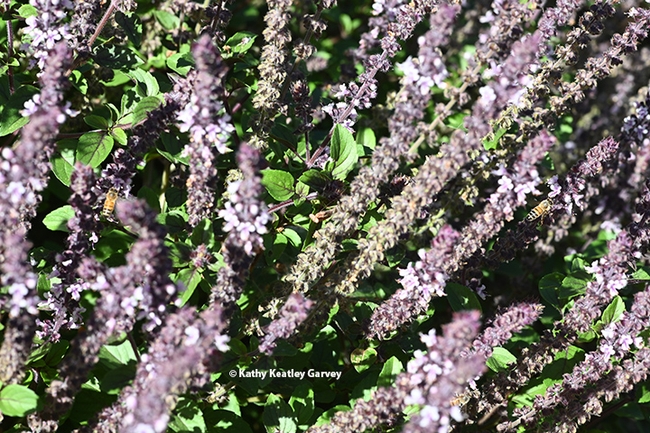
In this image, you can see two bees on the African blue basil. But can you find the praying mantis? (Photo by Kathy Keatley Garvey)
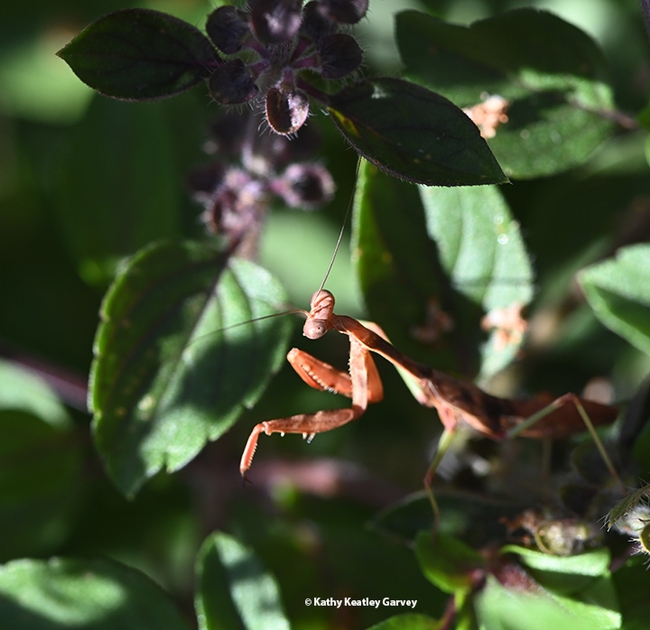
Oh, there you are, praying mantis! Enjoying a little sunshine, hmm? This one is a male subadult male Stagmomantis limbata, as identified by mantis expert Lohit Garikipati, a UC Davis alumnus now studying for his master's degree at Towson (Maryland) University. (Photo by Kathy Keatley Garvey)
Going Native: Do You Know the Native Bees of California?
Do you know the names of native bees commonly found in California's urban gardens? And how many have you seen in their habitat? Back in the 2009, a team of University of California scientists, led by Gordon Frankie of UC Berkeley and Robbin Thorp (1933-2019) of UC Davis, wrote this incredible...
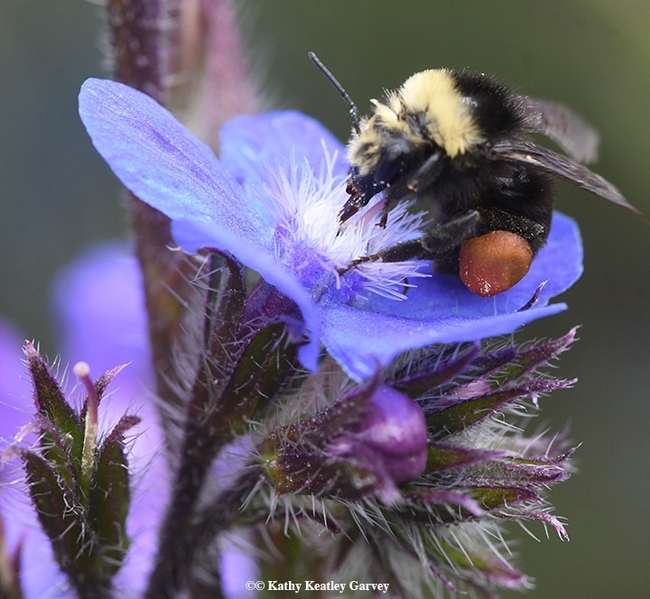
A female yellow-faced bumble bee, Bombus vosnesenskii, foraging on Anchusa azurea at Annie's Annuals and perennials, Richmond. (Photo by Kathy Keatley Garvey)
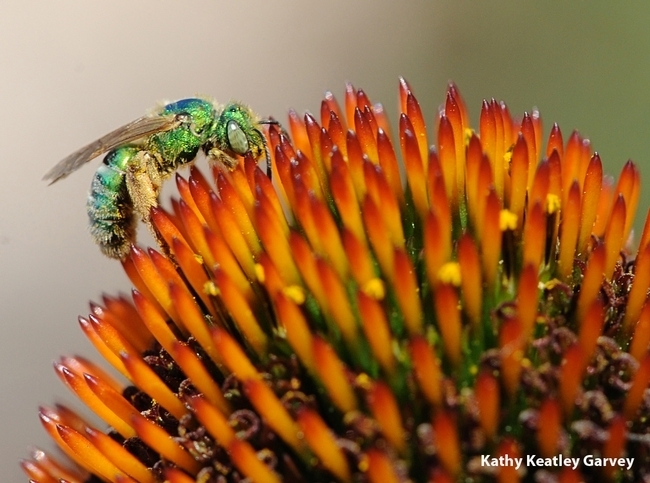
A female metallic green sweat bee, Agapostemon texanus, nectaring on a purple coneflower in a UC Davis garden. (Photo by Kathy Keatley Garvey)
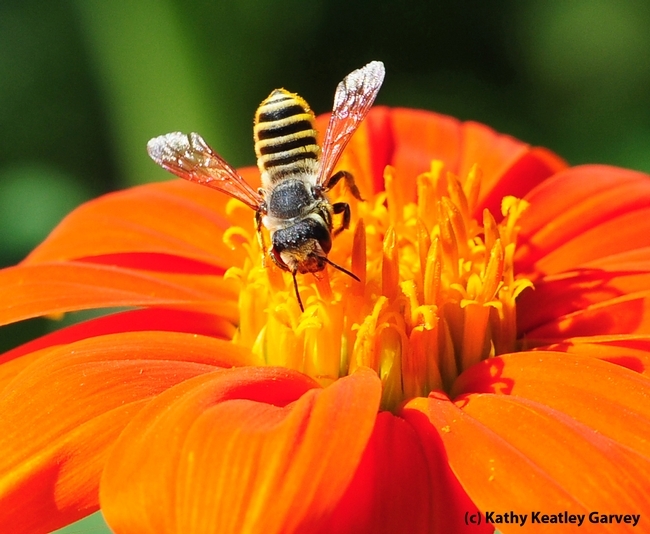
A female leafcutting bee, Megachile fidelis, foraging on a Mexican sunflower, Tithonia rotundifola, in a UC Davis garden. (Photo by Kathy Keatley Garvey)
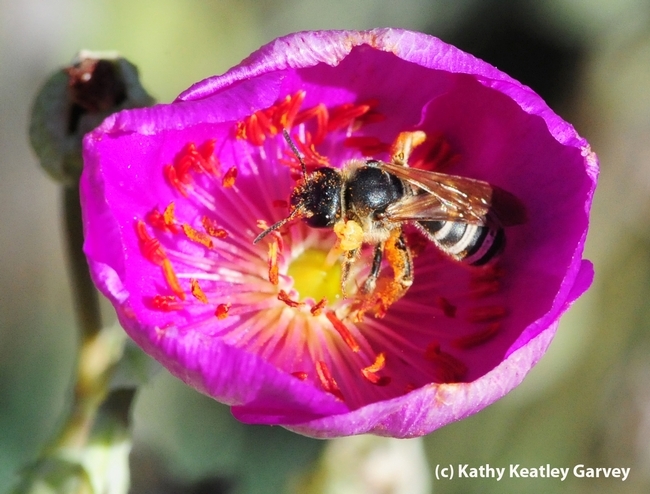
A sweat bee, Halictus farinosus, foraging on rock purslane in a Vacaville garden. (Photo by Kathy Keatley Garvey)
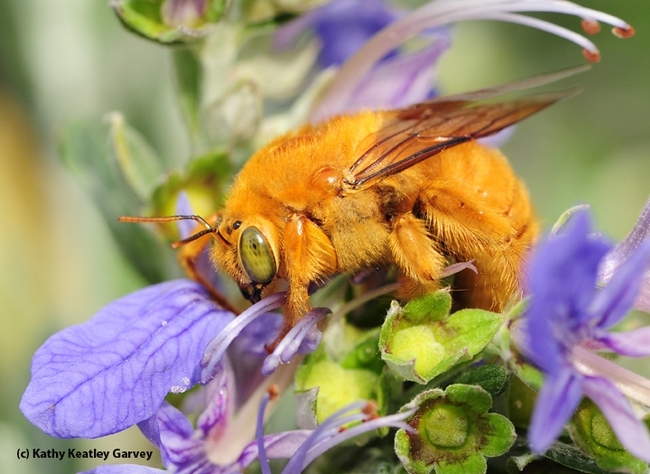
A male Valley carpenter bee, Xylocopa sonorina, foraging on germander, Teucrium fruitcans. (Photo by Kathy Keatley Garvey)
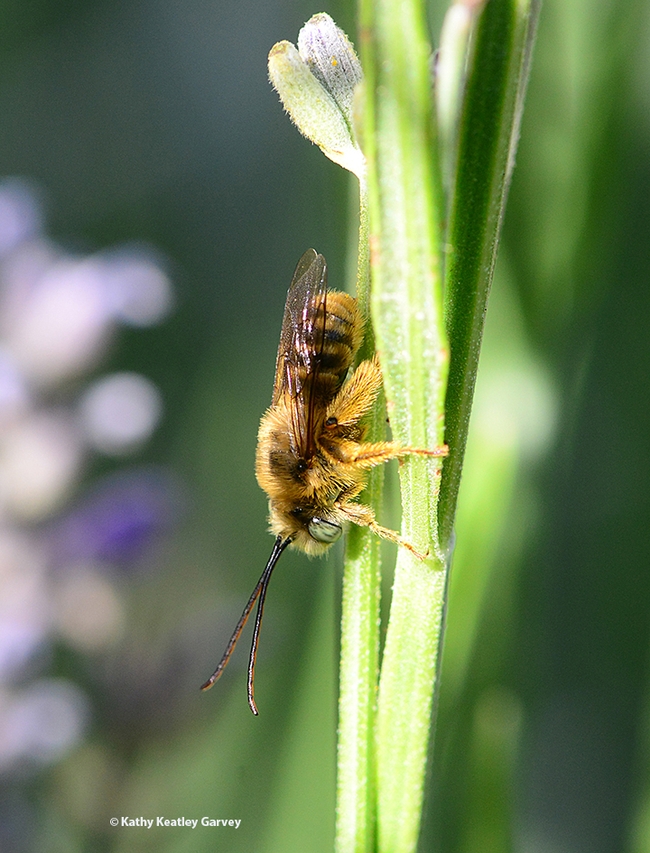
A male longhorned bee, Melissodes agilis, in a Davis garden. (Photo by Kathy Keatley Garvey)
Just a Sweat Bee Foraging on a Black-Eyed Susan
"Sweat bees have earned their common name from the tendency, especially of the smaller species,to alight on one's skin and lap up perspiration for both its moisture and salt content." So write University of California scientists in their award-winning book, California Bees and Blooms, a Guide for...
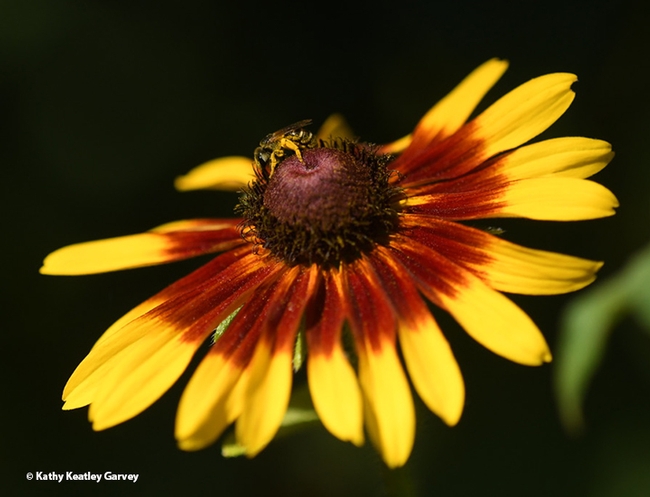
A sweat bee, Halictus ligatus, foraging on a Black-E
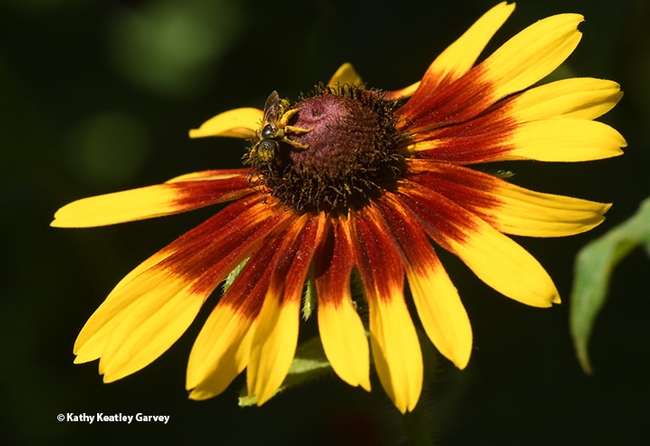
The sweat bee, Halictus ligatus, moves around the Black-Eyed Susan. (Photo by Kathy Keatley Garvey)
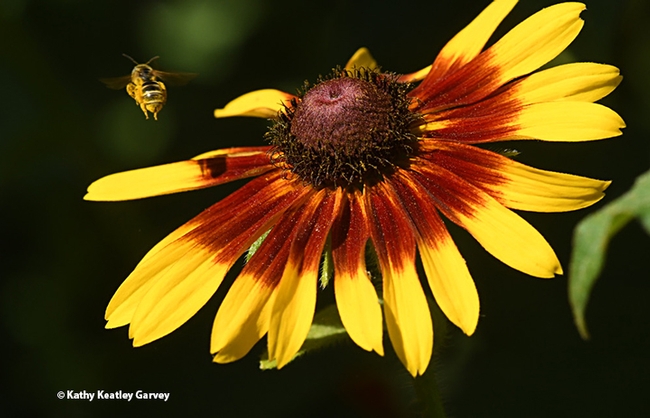
The sweat bee, Halictus ligatus, covered with pollen, takes flight. (Photo by Kathy Keatley Garvey)
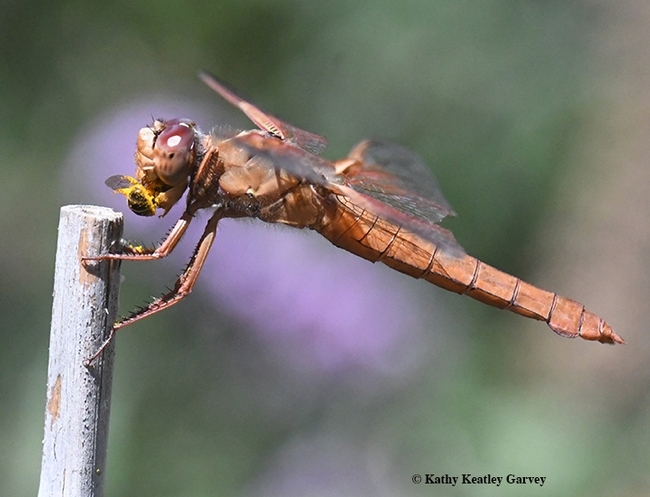
A flameskimmer dragonfly, Libellula saturata, munches on a sweat bee, Halictus ligatus. (Photo by Kathy Keatley Garvey)
A Metallic Green Surprise at Bodega Bay
A Nov. 5th trip to Bodega Bay's Doran Beach yielded a metallic green surprise. What was that foraging on a pink iceplant blossom near a path to the ocean? A metallic green sweat bee, Agapostemon texanus, also called an ultra green sweat bee. We usually don't see...
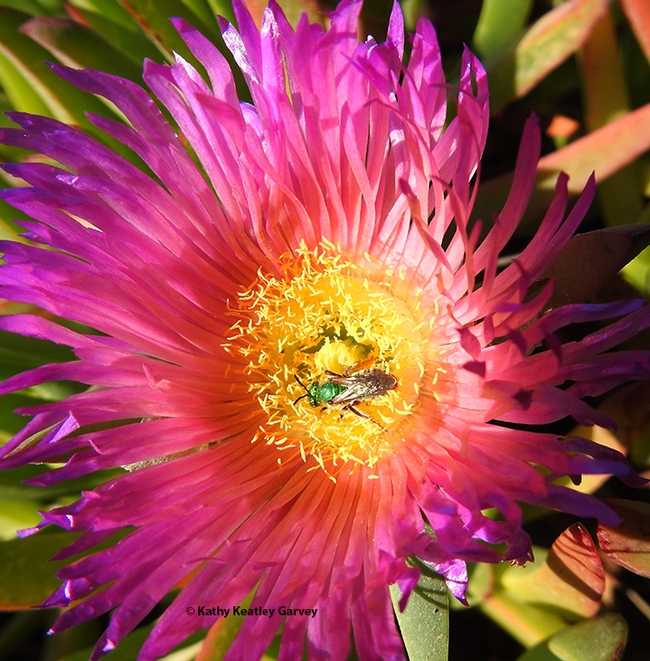
A male metallic green sweat bee, Agapostemon texanus, foraging on iceplant on Nov. 5 at a Bodega Bay's Doran Beach. (Photo by Kathy Keatley Garvey)
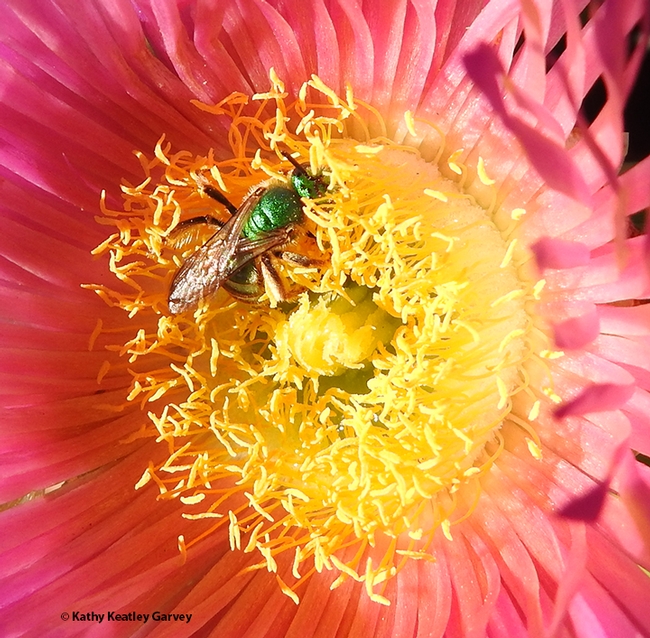
Close-up of a male metallic green sweat bee on an iceplant on Nov. 5 at a Bodega Bay's Doran Beach. (Photo by Kathy Keatley Garvey)
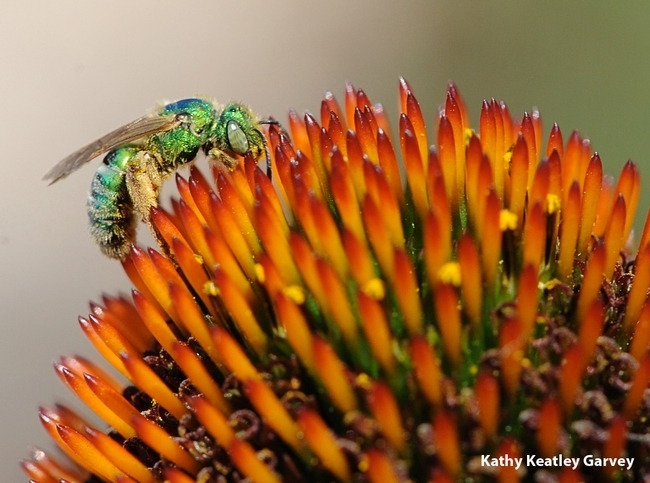
A female metallic green sweat bee nectaring on a purple coneflower in June 2011 at the Häagen-Dazs Honey Bee Haven, part of the UC Davis Department of Entomology and Nematology. The female is solid green from head to thorax to abdomen, while the male's head and thorax are green, but not the abdomen. (Photo by Kathy Keatley Garvey)
The Beauty of the Bee
Have you ever pulled up a chair in your garden and watched honey bees foraging? They are so intent on their "bees-ness" that they don't know you're there. It's a great opportunity to photograph them. Sometimes, if you're lucky, they'll buzz over your head on their way back to their colony,...
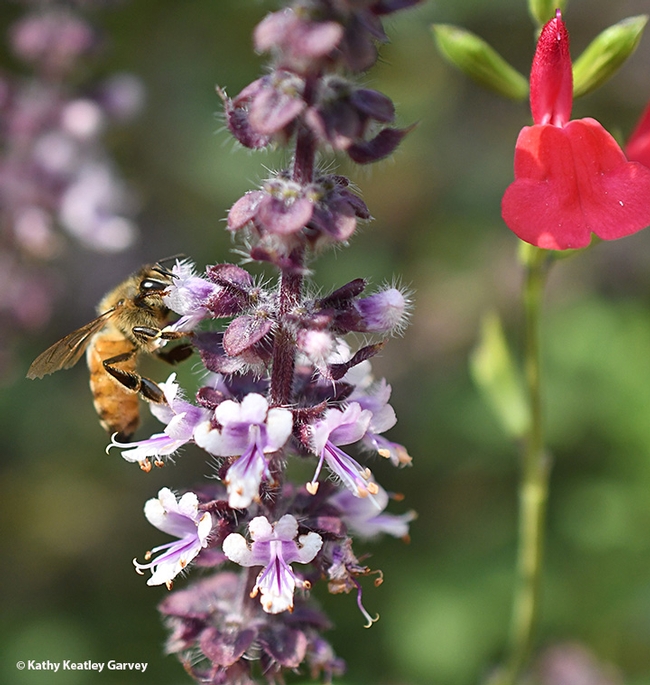
A honey bee nectaring on African blue basil in Vacaville, Calif. At right is Salvia microphylla "Hot Lips." (Photo by Kathy Keatley Garvey)
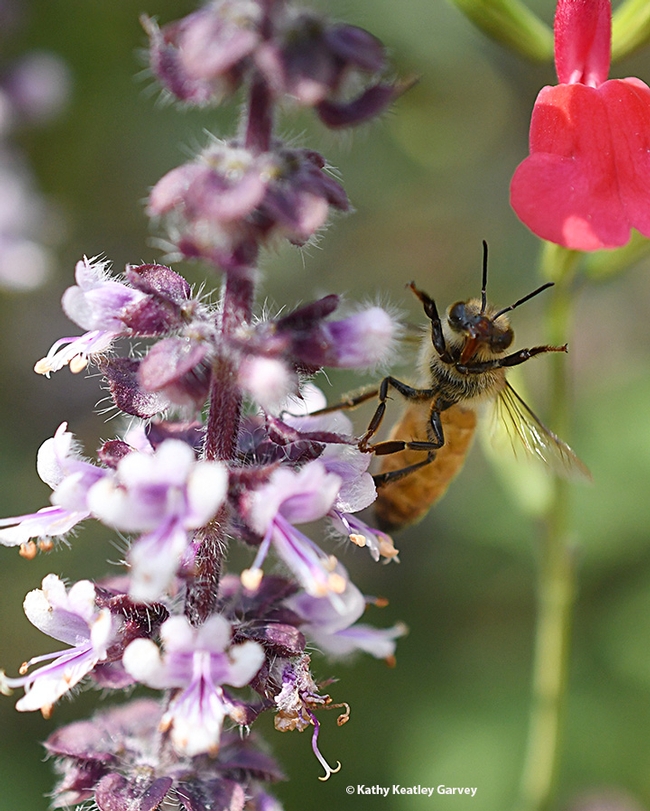
The honey bee, its tongue or proboscis still extended, departs from the African blue basil. (Photo by Kathy Keatley Garvey)
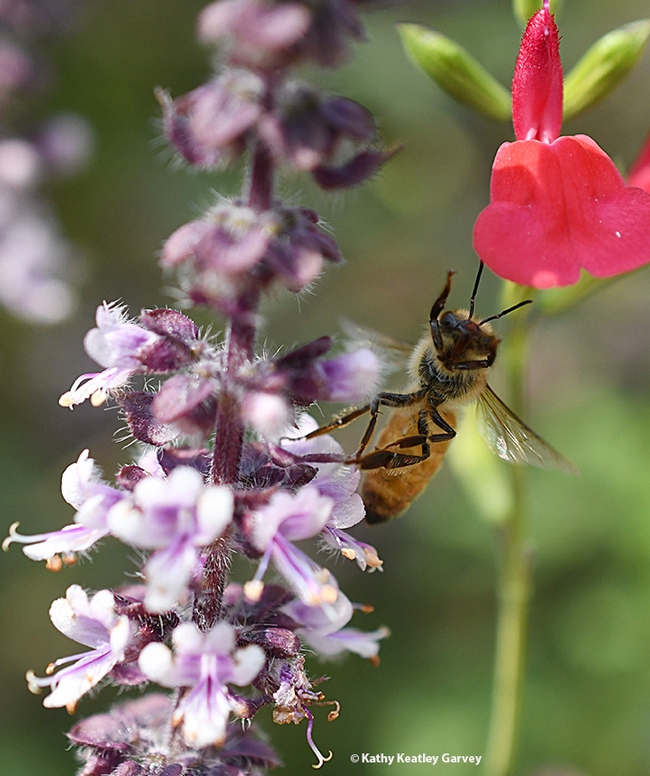
The honey bee pulls its proboscis back in and is leaving the African blue basil. (Photo by Kathy Keatley Garvey)
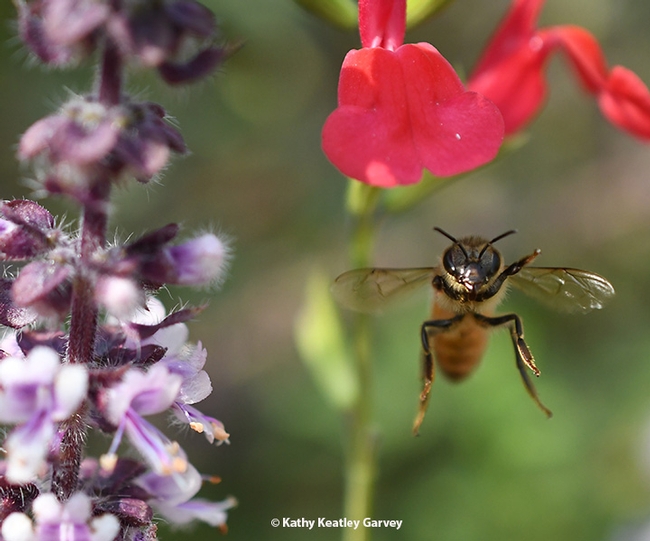
Frozen in time--a honey bee takes flight and heads for home. (Photo by Kathy Keatley Garvey)
